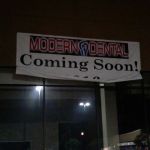Effective Sleep Apnea Treatment for Individuals with Sleep Apnea and Chronic Obstructive Pulmonary Disease (COPD)
- Understanding Sleep Apnea and COPD
- The Impact of Sleep Apnea on COPD Patients
- Treatment Options for Sleep Apnea and COPD
- Case Study: Managing Sleep Apnea and COPD Together
- Taking the Next Step Toward Better Health
1. Understanding Sleep Apnea and COPD
Sleep apnea and chronic obstructive pulmonary disease (COPD) are two serious health conditions that can have a significant impact on an individual's overall well-being. While sleep apnea causes interruptions in breathing during sleep, COPD is a progressive lung disease that makes it difficult to breathe, often leading to shortness of breath, coughing, and fatigue. When these two conditions occur together, they can exacerbate each other, leading to more severe health problems. But how do these conditions relate to each other, and why is effective treatment so critical?
Sleep apnea occurs in two forms: obstructive sleep apnea (OSA) and central sleep apnea. OSA is the most common form, where the airway becomes blocked during sleep, leading to breathing pauses. Central sleep apnea, on the other hand, happens when the brain fails to send the proper signals to the muscles that control breathing. COPD, a chronic lung disease, often occurs due to long-term exposure to irritants like cigarette smoke, causing breathing difficulties that can range from mild to severe.
2. The Impact of Sleep Apnea on COPD Patients
When someone has both sleep apnea and COPD, the consequences can be much more severe than when either condition is present alone. Studies have shown that individuals with COPD are at a higher risk of developing sleep apnea. The combination of obstructed airways from sleep apnea and limited airflow from COPD creates a dangerous cycle. During sleep, people with both conditions may experience frequent breathing disruptions, reducing oxygen levels in the blood, which can lead to serious health complications like heart disease, high blood pressure, and an increased risk of hospitalization.
For those with COPD, sleep apnea can significantly affect their ability to get restorative sleep. This can result in chronic daytime fatigue, difficulty concentrating, and even worsened COPD symptoms. In turn, untreated COPD can make sleep apnea symptoms more severe, leading to a vicious cycle of poor sleep quality and worsening respiratory function.
3. Treatment Options for Sleep Apnea and COPD
Treating both sleep apnea and COPD requires a multifaceted approach, as managing one condition can positively influence the other. The goal is to improve sleep quality, manage breathing difficulties, and ultimately enhance overall health. Below are the most common treatment options:
Continuous Positive Airway Pressure (CPAP): For individuals with obstructive sleep apnea, CPAP therapy is often the first line of defense. This treatment involves wearing a mask connected to a machine that delivers a constant stream of air, helping keep the airways open during sleep. While CPAP is effective for sleep apnea, it is also beneficial for COPD patients, as it can help maintain consistent airflow and improve oxygen levels throughout the night.
Bilevel Positive Airway Pressure (BiPAP): BiPAP therapy is another option, particularly for people who have both sleep apnea and COPD. Unlike CPAP, which provides a single air pressure during both inhalation and exhalation, BiPAP offers different pressures for inhalation and exhalation, making it easier to breathe out. This is especially helpful for those with COPD, as it reduces the effort needed to exhale and supports normal breathing patterns.
Oxygen Therapy: In some cases, COPD patients may require supplemental oxygen to help maintain proper oxygen levels in the blood, especially at night. Oxygen therapy can be used in combination with CPAP or BiPAP to provide additional respiratory support during sleep.
Medications: Bronchodilators and steroids are commonly used to manage COPD symptoms. These medications help open the airways, reduce inflammation, and improve airflow. For sleep apnea, certain medications like modafinil may be prescribed to help alleviate daytime sleepiness caused by poor sleep quality.
4. Case Study: Managing Sleep Apnea and COPD Together
To illustrate the importance of addressing both conditions, let’s look at the case of John, a 65-year-old man with a long history of smoking who has been diagnosed with both sleep apnea and COPD. John had been struggling with chronic fatigue, frequent nighttime awakenings, and worsening shortness of breath. His doctor prescribed a combination of CPAP therapy and oxygen therapy, and after a few weeks, John began to experience significant improvements. Not only did his sleep quality improve, but he also noticed a reduction in his COPD symptoms, including less coughing and better energy levels during the day.
This case highlights the importance of a tailored treatment plan that addresses both sleep apnea and COPD simultaneously. For patients like John, managing both conditions together can lead to better overall health outcomes and an improved quality of life.
5. Taking the Next Step Toward Better Health
If you or a loved one is struggling with both sleep apnea and COPD, it’s essential to consult with a healthcare provider who specializes in these conditions. A comprehensive treatment plan that includes the use of CPAP or BiPAP therapy, along with oxygen therapy and medications, can greatly improve your sleep quality and respiratory health. Early intervention and proper management are key to preventing further complications and ensuring a better quality of life.
Don’t let sleep apnea and COPD control your life. Take action today by speaking with a healthcare professional and exploring treatment options that can help you breathe easier and sleep better. If you’re interested in learning more about effective sleep apnea treatments or need guidance on managing COPD, reach out to a specialist who can help you take the next step in your journey to better health.







 UI Health Mile Square Health Center - Primary and Immediate Care3.0 (13 review)
UI Health Mile Square Health Center - Primary and Immediate Care3.0 (13 review) Barrett Dental Care4.0 (221 review)
Barrett Dental Care4.0 (221 review) Dr. Mia L. Ancheta - San Angel Dental3.0 (26 review)
Dr. Mia L. Ancheta - San Angel Dental3.0 (26 review) Modern Dental3.0 (148 review)
Modern Dental3.0 (148 review) Advanced Care In Endodontics5.0 (345 review)
Advanced Care In Endodontics5.0 (345 review) Pearl Family Dental Care4.0 (123 review)
Pearl Family Dental Care4.0 (123 review) The Importance of Oral Health Education During Pregnancy for a Healthy Pregnancy
The Importance of Oral Health Education During Pregnancy for a Healthy Pregnancy Best Tips for Brushing Your Teeth Properly for Healthy Gums: Essential Techniques for Oral Health
Best Tips for Brushing Your Teeth Properly for Healthy Gums: Essential Techniques for Oral Health Why Skipping Dental Checkups Can Lead to Bigger Oral Health Problems
Why Skipping Dental Checkups Can Lead to Bigger Oral Health Problems Advantages of Porcelain Dental Restorations
Advantages of Porcelain Dental Restorations How Can Diabetes Cause Tooth and Gum Problems? Preventing and Managing Oral Health Issues
How Can Diabetes Cause Tooth and Gum Problems? Preventing and Managing Oral Health Issues Healthy Habits for Promoting Good Oral Health and Hygiene: Tips for a Healthy Smile
Healthy Habits for Promoting Good Oral Health and Hygiene: Tips for a Healthy Smile